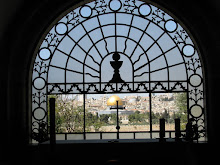The 2,000-year-old scrolls were found in the late 1940s and contain the earliest known copies of every book of the Hebrew Bible (missing only the Book of Esther), as well as apocryphal texts and descriptions of rituals of a Jewish sect at the time of Jesus. Separated into 15,000 fragments that make up about 900 documents, the scrolls date from the third century BC to the first century AD. In January 1947, Juma a Bedouin shepherd boy of the Ta'amireh tribe was searching for his missing sheep in the limestone cliffs of Qumran, a deserted place in northern Dead Sea area. He threw a stone into the dark interior of a cave and heard something shatter. The unexpected cracking sound surprised him and increased his curiosity in finding what lies in those remote caves? May be there lies some treasure? He told this incident to his cousins, Khalil and Muhammed. But it was getting late, and the goats had to be gathered and they decided to explore next day. The youngest of the three, a fifteen year old Muhammed Al-Dhib, rose the next day before his two fellow “treasure-seekers” and made his way to the cave. He came back disappointed and told his friends that inside the cave there was no treasure of gold but only a few bundles wrapped in cloth and greenish with age. Little did Muhammed realize that those dirty bundles wrapped in linen and blackened with age were going to be “the greatest archaeological discovery in the twentieth century?” The greatest manuscript treasure ever found—the first seven manuscripts of the Dead Sea Scrolls! The oldest manuscript of Bible available today! Before the discovery of the Dead Sea Scrolls, the oldest manuscripts of the Bible were from 9th century AD. The Dead Sea Scrolls pushed that date 1000 years back. By 1956, 10 more caves and more than 220 biblical and 700 non-biblical manuscripts/scrolls were discovered from this area. Fragments of every book Old Testament have been discovered except for the book of Esther. The most famous is however the "Great Isaiah Scroll" which contains the entire book of Isaiah exactly in the same way as we read today with all 66 chapters!
The story of how those scrolls traveled from the hands of young Bedouin goat herders to the Book of Shrine in Israel Museum is even stranger than fiction. The seven scrolls they found were sold to a cobbler and antiquities dealer called Kando. He in turn sold three of the scrolls to Eleazar L. Sukenik of Hebrew University, father of Yigal Yadin (a general in the Israeli army who later became a famous archaeologist and excavator of Masada and Hazor) and four to Metropolitan Mar Athanasius Yeshue Samuel of the Syrian Orthodox monastery of St. Mark. Mar Athanasius in turn took them to the American School of Oriental Research, where they came to the attention of American and European scholars. The great archaeologist William F. Albright soon announced that the scrolls were from the period between 200 BC and AD 200. Unable to find an interested buyer, Metropolitan Athanasius placed an ad in the Wall Street Journal. Yigal Yadin happened see this ad and purchased these priceless scrolls for around $250,000 through a third party. In February of 1955, the Prime Minister of Israel announced that the State of Israel had purchased the scrolls, and all seven were to be housed in the Shrine of the Book, where they can be seen today.
The Dead Sea Scrolls were written by Essenes, a monastic-like group of ultra-orthodox Jewish celibates who lived in Qumran during 200 BC to AD 70. Since the destruction of Israel in AD 70 by Romans, the precious library of Essenes disappeared from history only to be rediscovered 1900 years later in 1947, exactly a year before modern Israel was formed; appears to me nothing short of a miracle and indeed a divine guidance .
The story of how those scrolls traveled from the hands of young Bedouin goat herders to the Book of Shrine in Israel Museum is even stranger than fiction. The seven scrolls they found were sold to a cobbler and antiquities dealer called Kando. He in turn sold three of the scrolls to Eleazar L. Sukenik of Hebrew University, father of Yigal Yadin (a general in the Israeli army who later became a famous archaeologist and excavator of Masada and Hazor) and four to Metropolitan Mar Athanasius Yeshue Samuel of the Syrian Orthodox monastery of St. Mark. Mar Athanasius in turn took them to the American School of Oriental Research, where they came to the attention of American and European scholars. The great archaeologist William F. Albright soon announced that the scrolls were from the period between 200 BC and AD 200. Unable to find an interested buyer, Metropolitan Athanasius placed an ad in the Wall Street Journal. Yigal Yadin happened see this ad and purchased these priceless scrolls for around $250,000 through a third party. In February of 1955, the Prime Minister of Israel announced that the State of Israel had purchased the scrolls, and all seven were to be housed in the Shrine of the Book, where they can be seen today.
The Dead Sea Scrolls were written by Essenes, a monastic-like group of ultra-orthodox Jewish celibates who lived in Qumran during 200 BC to AD 70. Since the destruction of Israel in AD 70 by Romans, the precious library of Essenes disappeared from history only to be rediscovered 1900 years later in 1947, exactly a year before modern Israel was formed; appears to me nothing short of a miracle and indeed a divine guidance .

No comments:
Post a Comment